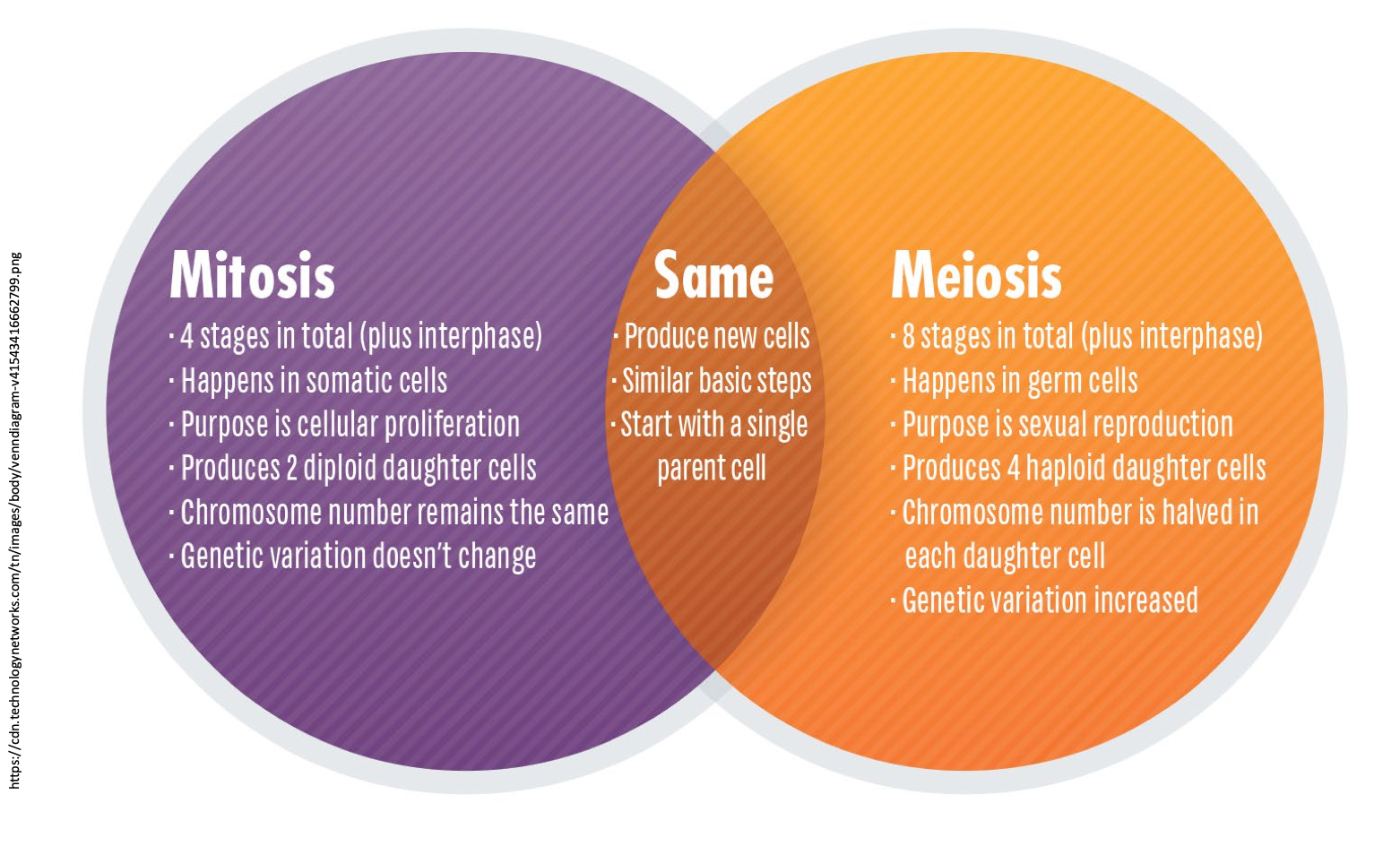sexual reproduction, meiosis and genetic recombination
1/24
There's no tags or description
Looks like no tags are added yet.
Name | Mastery | Learn | Test | Matching | Spaced |
|---|
No study sessions yet.
25 Terms
1) since circular DNA replication begins soon after , one copy of the origin moves toward the other end of the cell.
2) Replication continues , replication continues , one copy of the origin is now at each end of the cell. Meanwhile , the cell elongate
3) replication finishes the plasma membrane grow inward, new cell wall is formed
4) resulting. in two daughter cell.
補充番第1 2 點. once replication start , the origin of replication is first be replicated . Hence , producing copies of origins which moves toward opposite end of the cell.
steps of binary fission
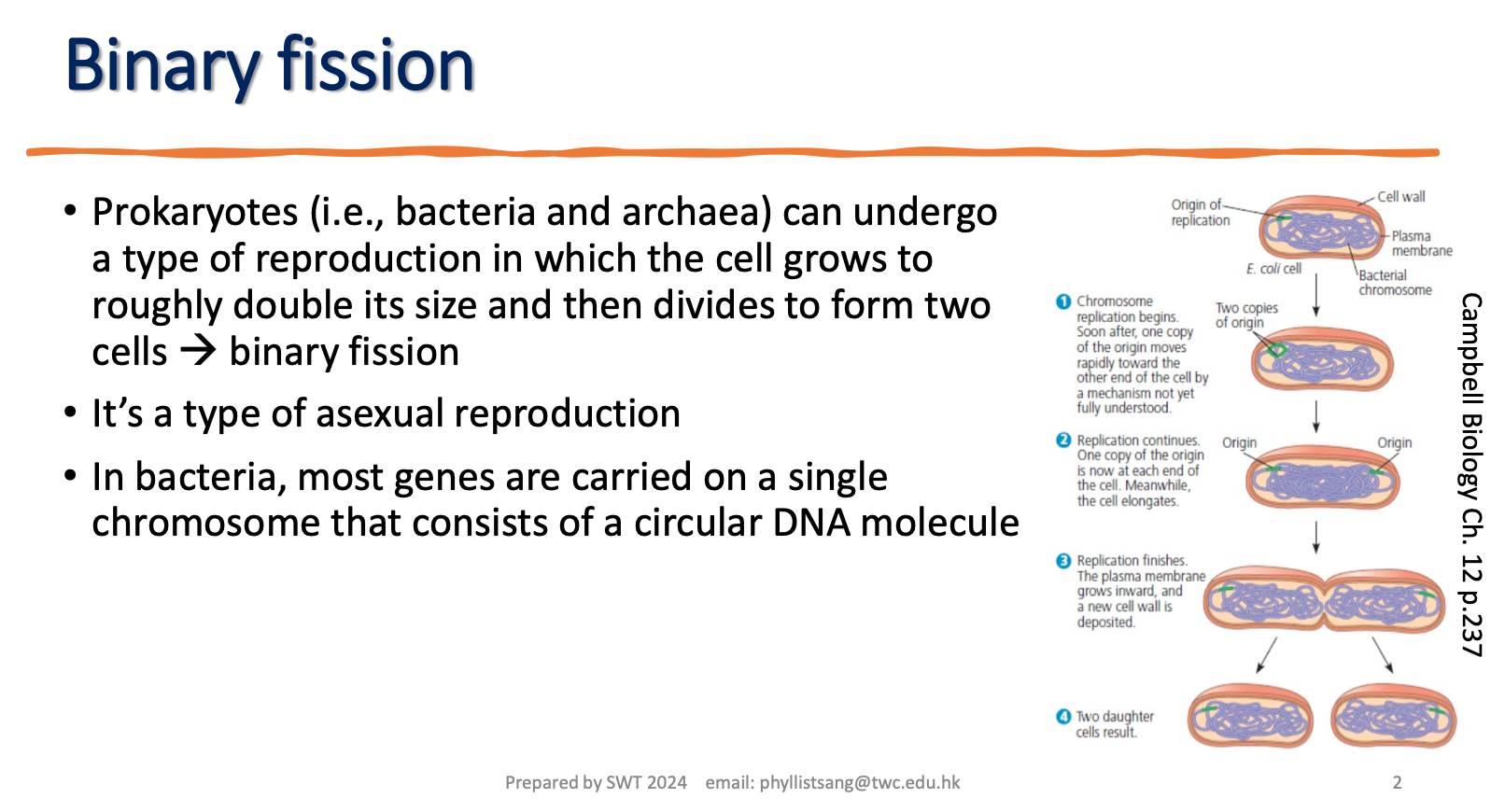
chromosomal circular DNA free floating in the cytosol.
where did the gene stored in bacteria
mitotic cell division
e.g. yeast , vegetative propagation,
binary fission .
asexual reproduction →
two types of asexual reproduction
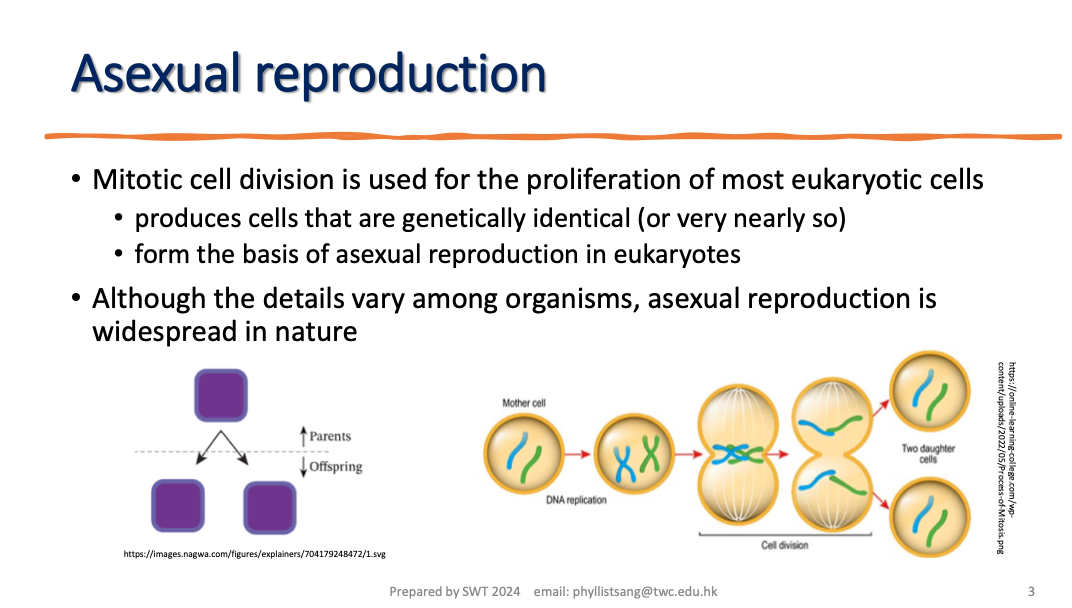
asexual reproduction
reproduction of offspring from a single parent cell without fusion of gamete.
mitosis
phase of the cell cycle in which a cell’s nucleus is divided into two nuclei , producing genetically identical daughter cell. ( focus on producing cells w
asexual reproduction versus mitosis
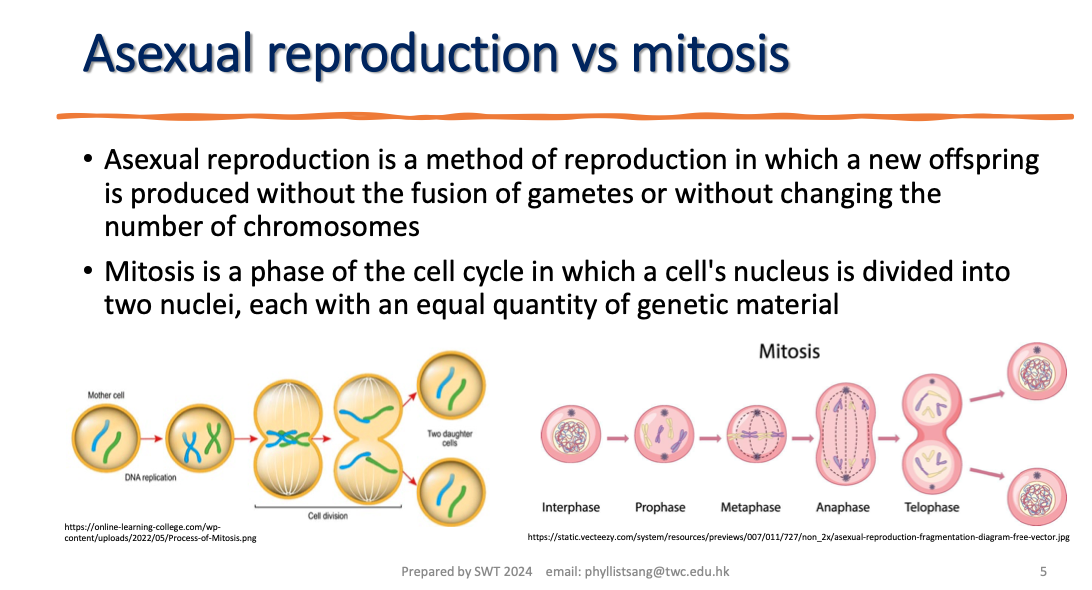
sexual reproduction produce offspring that’s genetically dissimilar compare to each other or parents by mixing genetic information from two parents.
allows genetic traits found in different individual to be combined in various ways in offspring → generating great variety among the individuals.
sexual reproduction advantage over asexual reproduction.

can conclude asexual reproduction didn’t involve the fusion of gamete .
while sexual reproduction
conclusion?
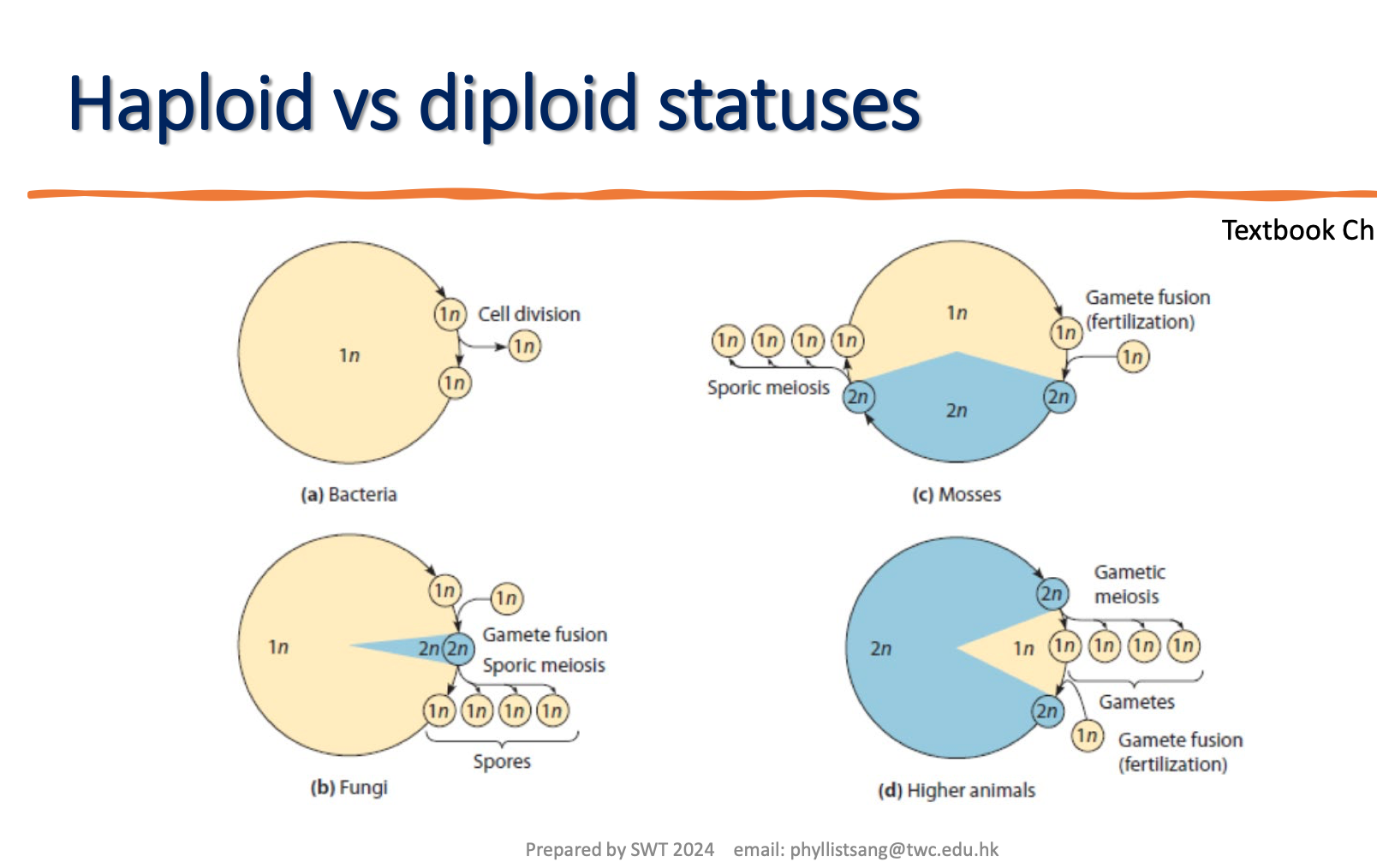
the genes order are generally the same. Only slightly variation will found In the base sequence .
For the same gene loci, the dominant allele will mask over the recessive one. Which means the dominant allele will express its genes to produce enzyme that leads to showcase of phenotype.
features of homologous chromosome
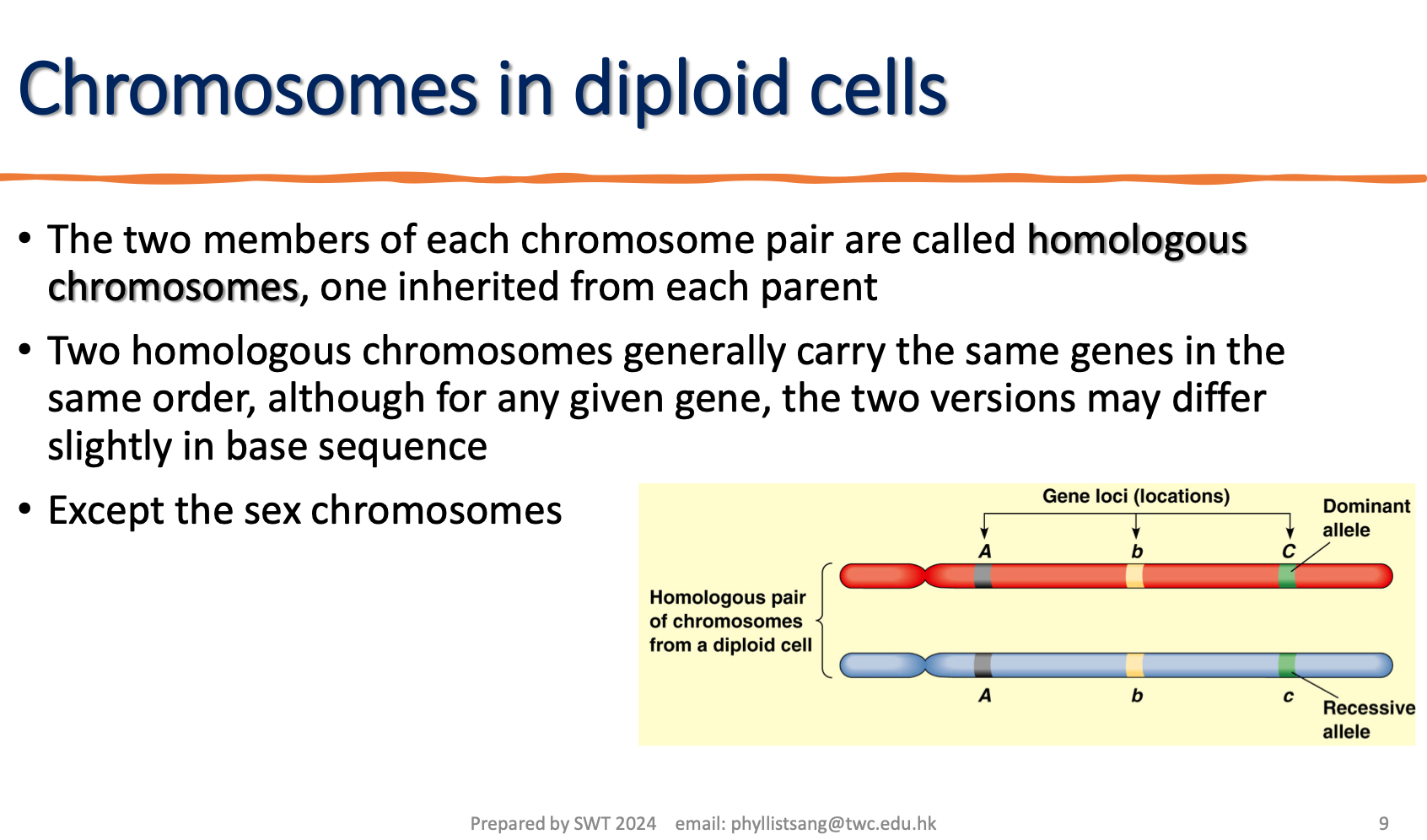
For the same gene loci, the dominant allele will mask over the recessive one. Which means the dominant allele will express its genes to produce enzyme that leads to showcase of phenotype.
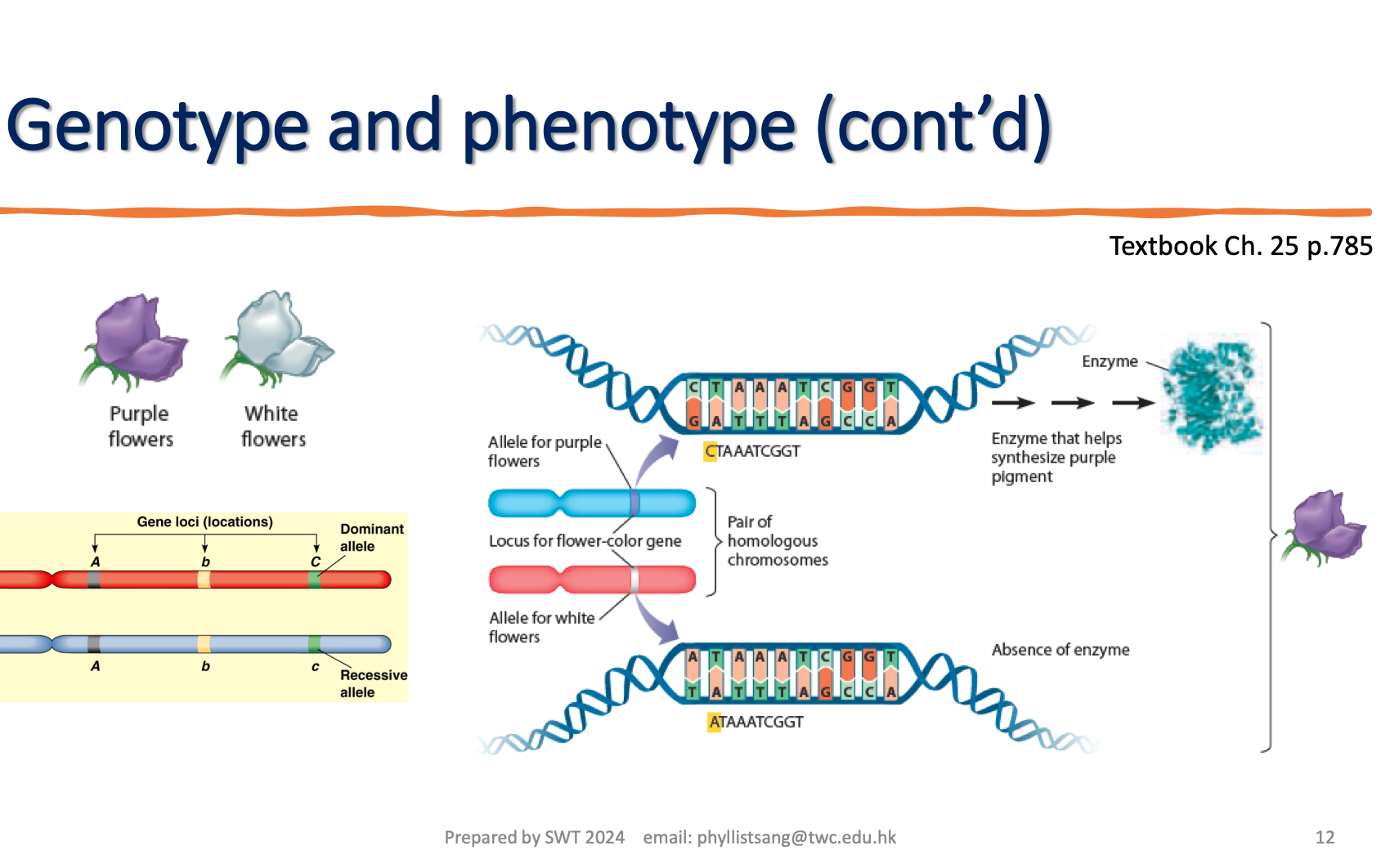
heterogamous reproduction .
Male gamete, sperm, is relatively smaller and mobile
while female gamete , egg , immovable and large , store a lot of nutrients in animal species.
the terms to describe the sexual reproduction where two sex of gametes have different morphology.
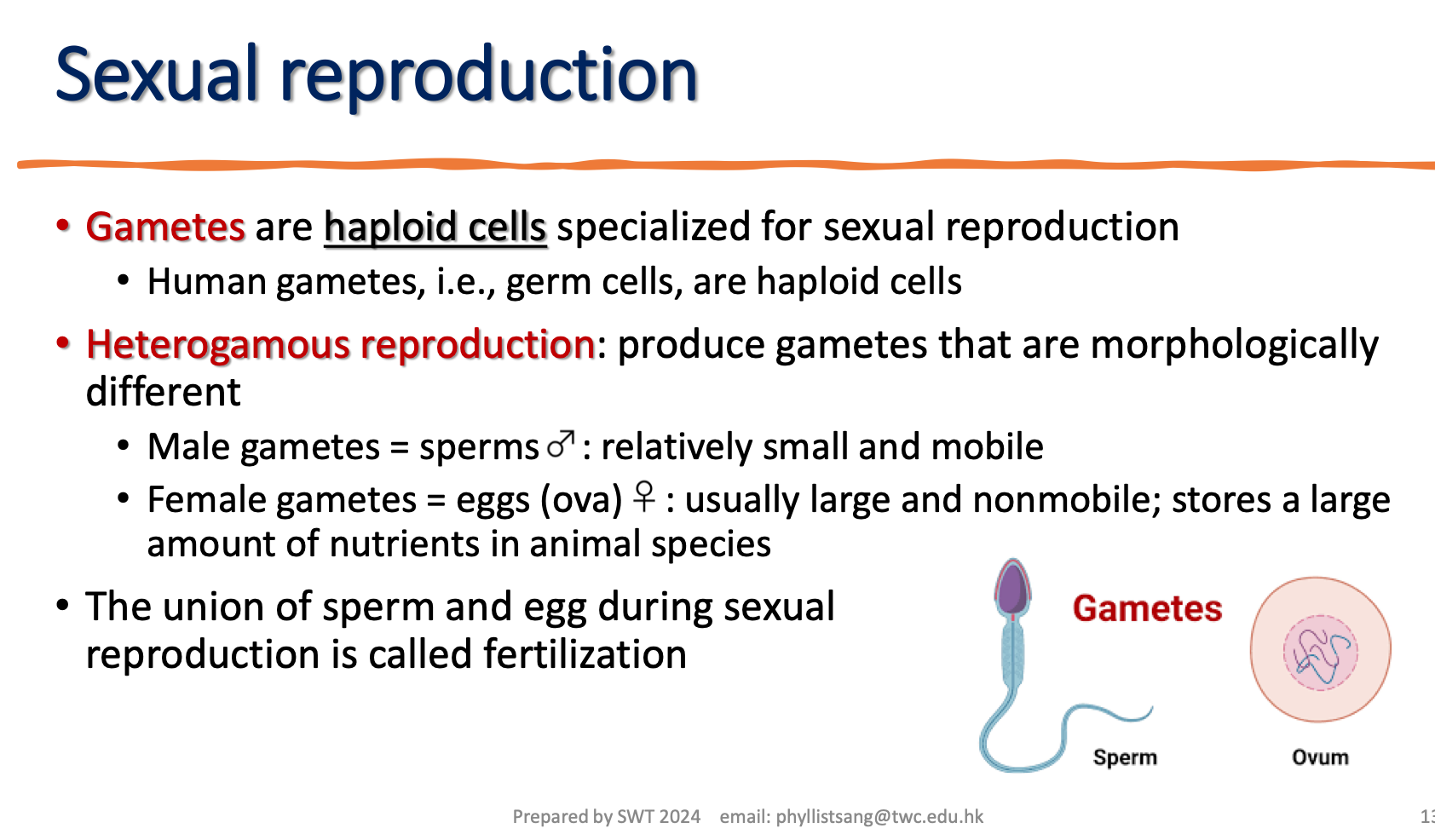
haploid sperm and haploid egg fuse together to form a diploid zygote.
describe fertilisation
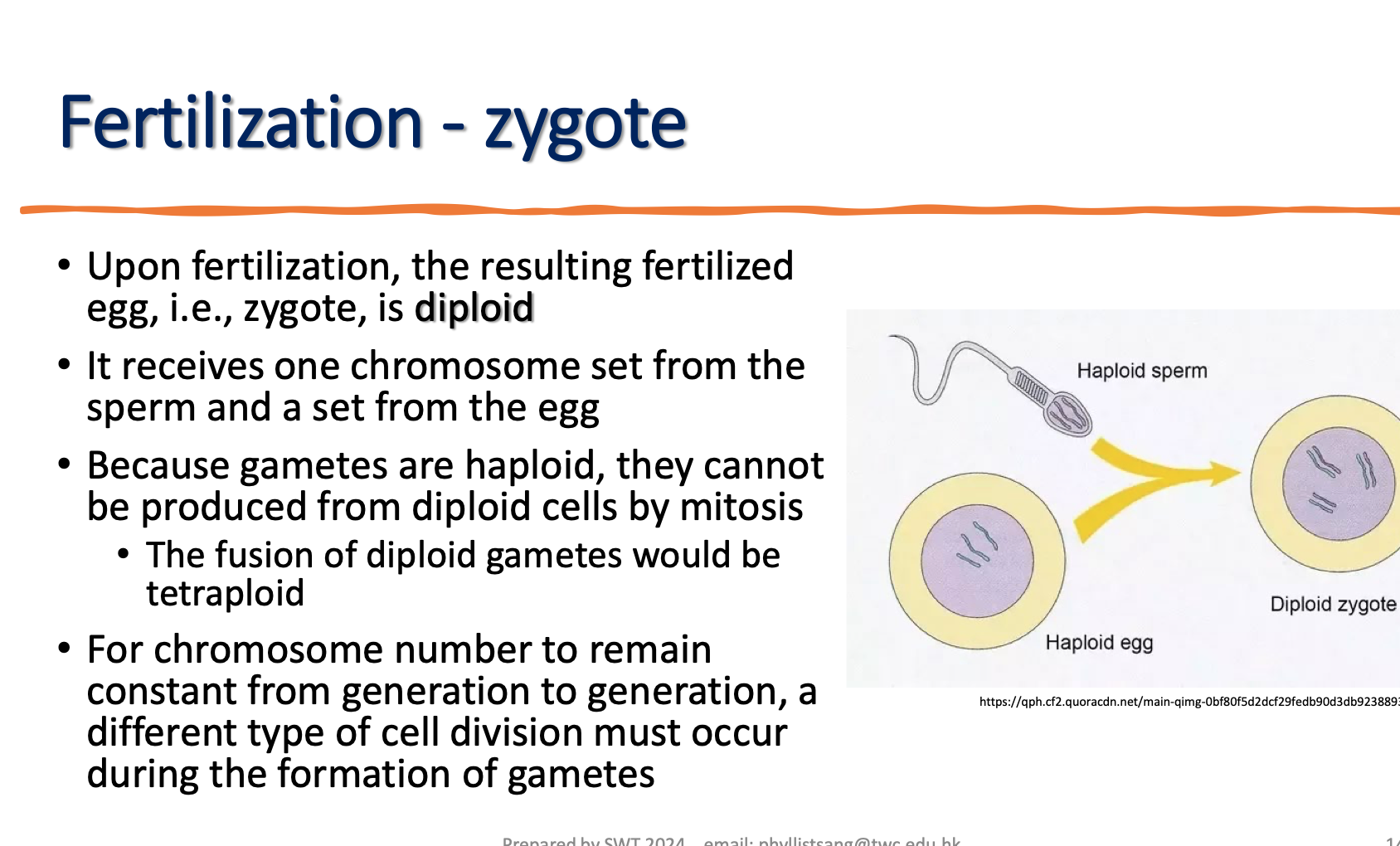
gametes are haploid , if it is produced by mitosis , it would result in the fusion of diploid gametes that form tetraploid zygote. different type of cell division ensure a constant number of chromosome are pass from generation to generation
why gametes cannot produce by mitosis?
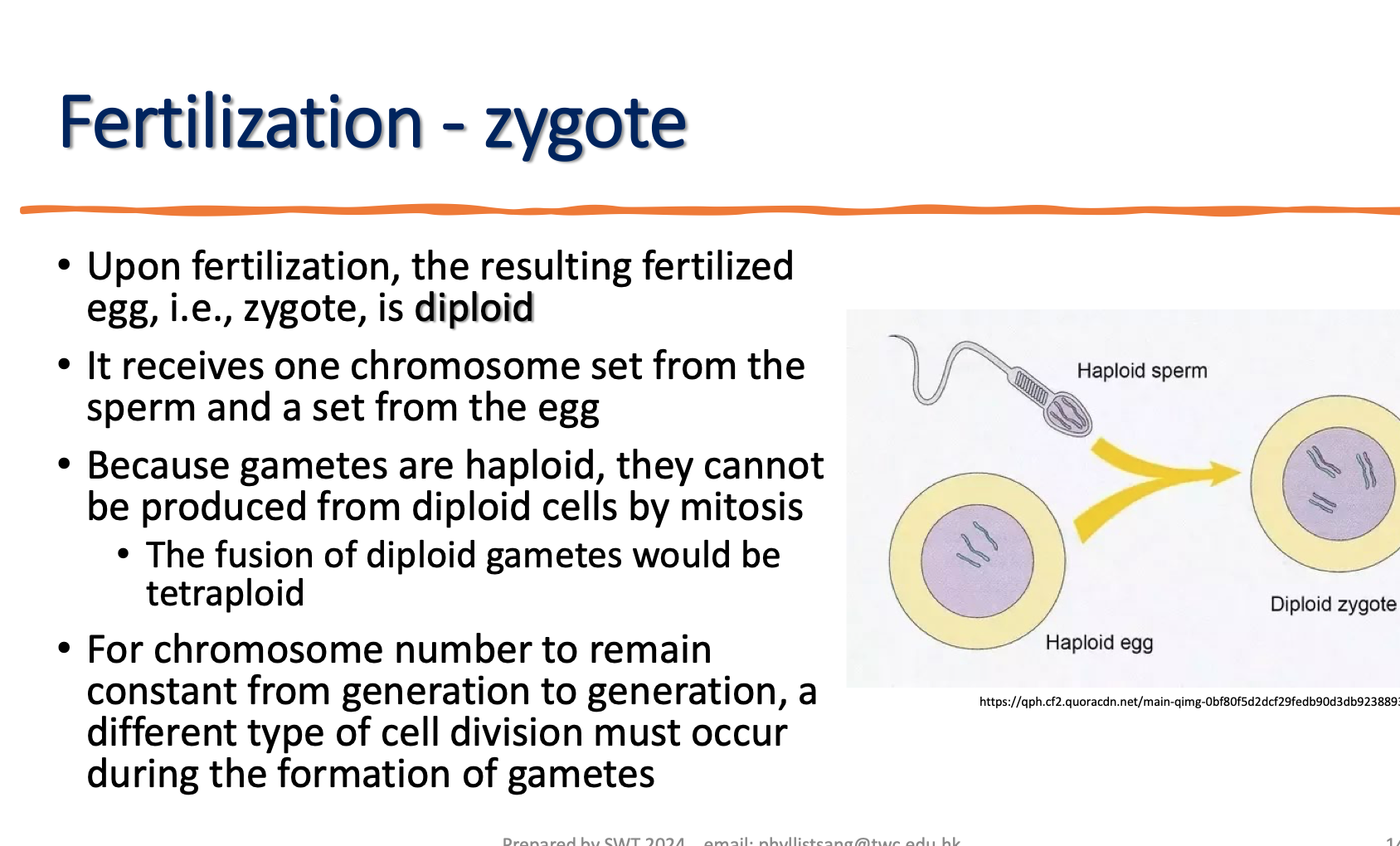
gametogenesis
1st stage : proliferation of undifferentiated germ cells by mitosis.
In males , mitosis generates primary spermatocytes from spermatogonium
in female , mitosis generates primary oocytes from Oogonium
2nd stage : generation of gametes by meiosis
despite their differing sizes , sperm and egg bring about equal amounts
name and list the stage for producing reproductive cells ,gamete/
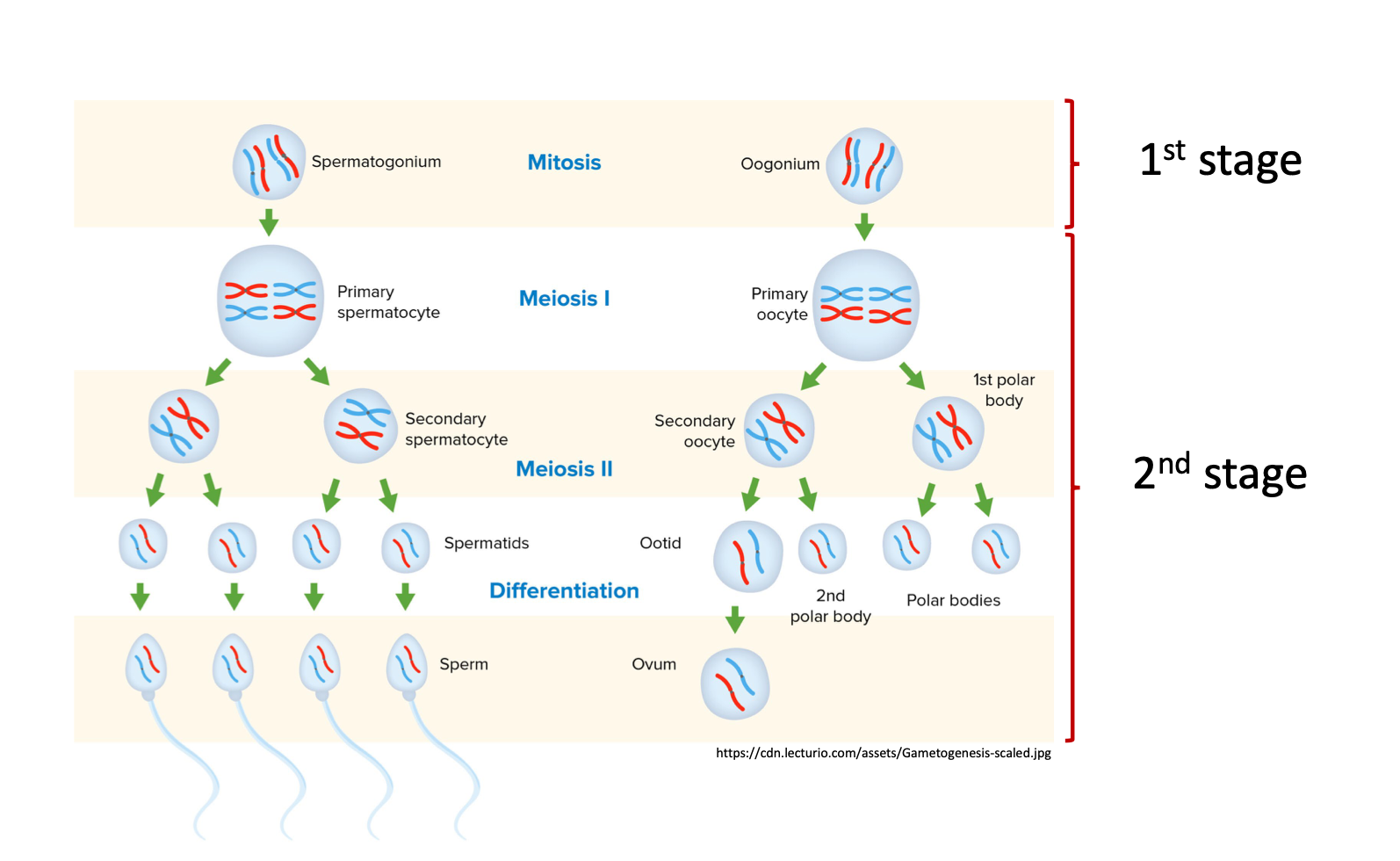
Spermatogenesis
1)the diploid spermatocyte undergo two meiotic division to form four haploid spermatids.
2) after meiosis has been completed, the haploid spermatid then differentiate into sperms cells by discarding most of their cytoplasm and developing flagella and other specialised structure .
Name and describe the production of spermatozoa in the testes
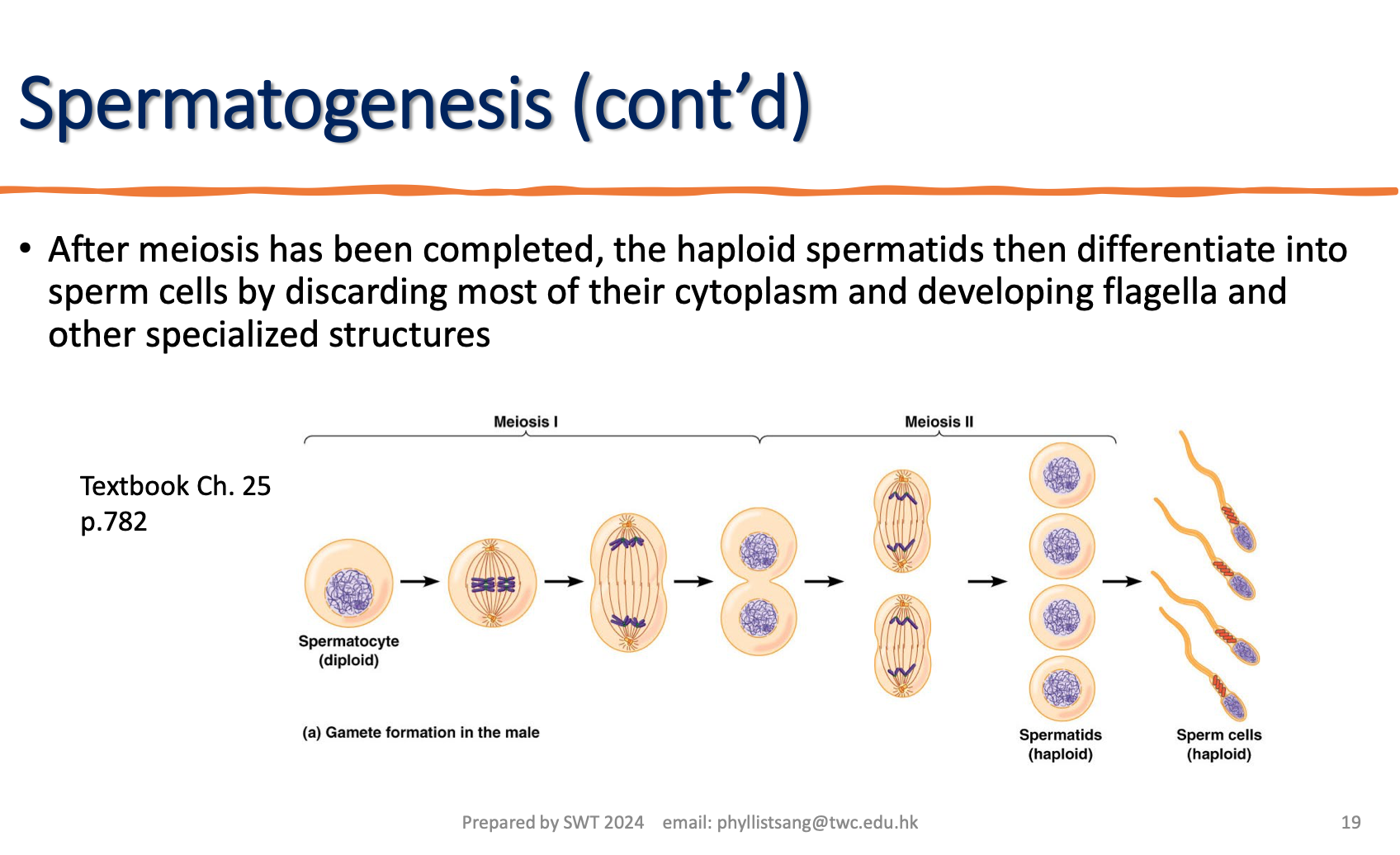
oogenesis .
the production of oocyte begins during feral development ( before birth). about 1 million primary oocytes per ovary are produced before birth.
the primary oocyte start meiosis but stop in prophase I until puberty.
the hormone (FSH) will trigger the continued division of some primary oocyte on each month.
once FSH stimulate the continue division of oocyte :
(1) the primary oocytes (diploid ) will complete the first meiotic division to form two haploid cells of unequal size
(2) one of the haploid cells forms a secondary oocyte →(3), while the other cells forms a polar body , which remains trapped within the follicle until it eventually degenerate .
(3) the secondary oocyte begins the second meiosis, producing one mature egg and one polar bodies. the primary polar bodies during meiosis II divide to form two polar bodies.
(4) once meiosis II is complete the mature egg forms an ovum ,and released into the oviduct. total of 3 polar bodies are formed per one primary oocyte.
Name and describe the procedure of the production of female gamete within the ovaries
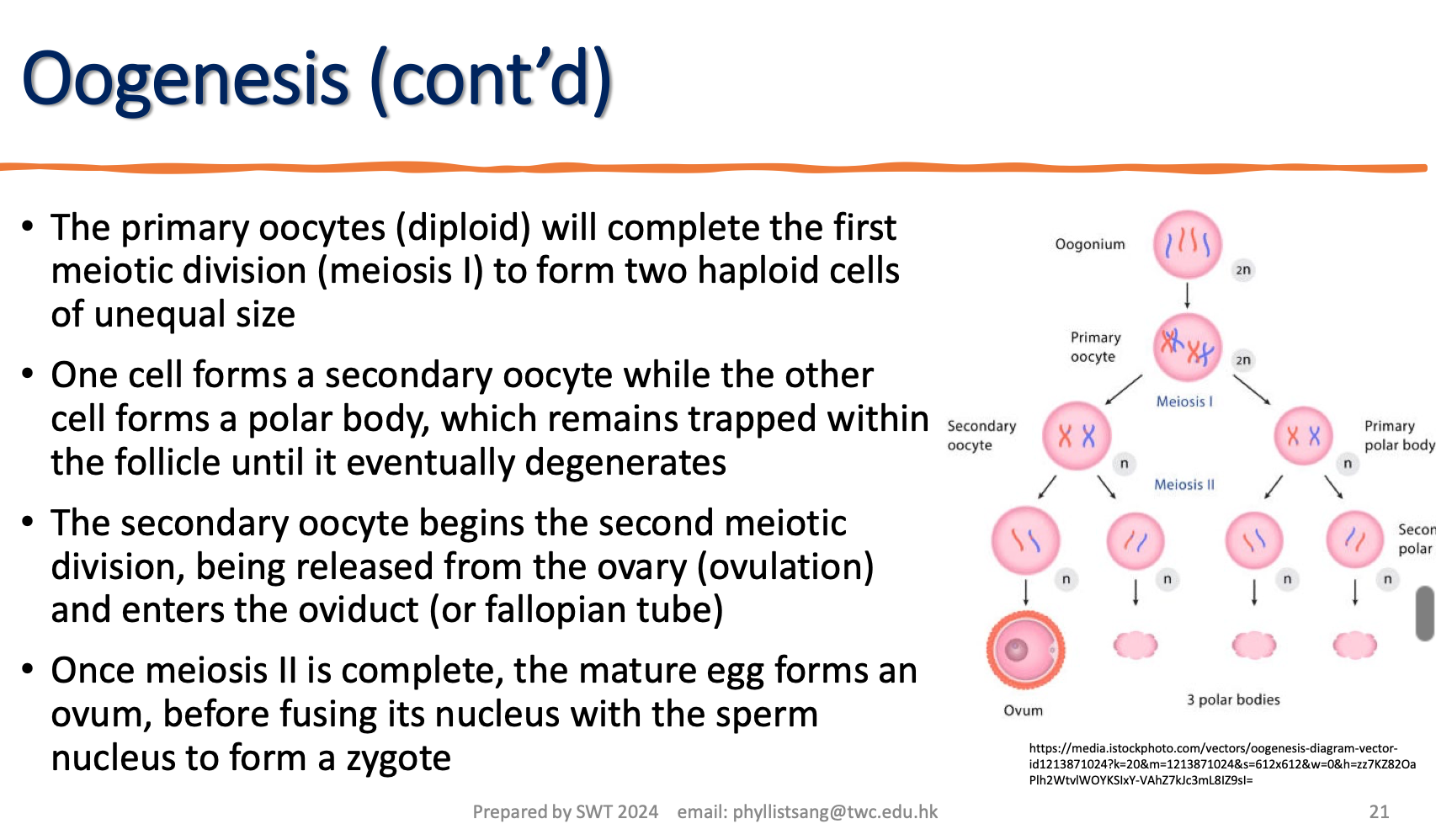
the cytoplasm that would otherwise have been distributed among four cells , is instead concentrated into one egg cell → maximising the content of stored nutrients in each egg. → providing sufficient energy supply for embryonic development.
producing ovum that 100 x greater volume than the primary oocyte.
the advantages of only one product of oogenesis developed into ovum while others three developed into 3 polar bodies.
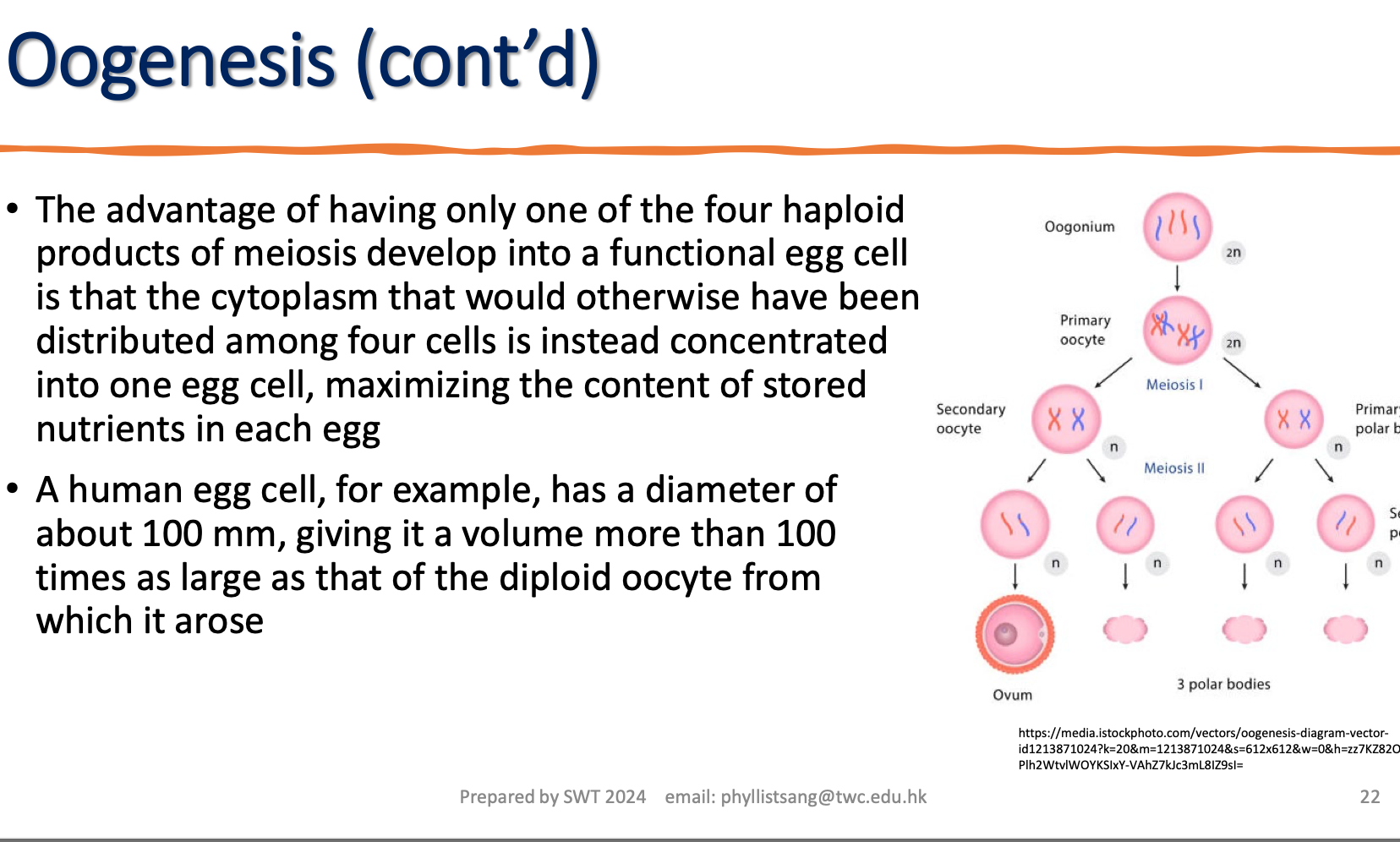
1) spermatogenesis take place in testis , oogenesis take place in ovary
2) meitotic divisions is equal in spermatogenesis, while oogenesis have a unequal division of cytoplasm (focus on increase volume of the only ovum produced.
3) germ line epithelium is involved in spermatogenesis , not for oogenesis
4) spermatogenesis produced 4 gamete per cell, while oogenesis produce one gamete only with 3 polar bodies.
5) the sperm is smaller than the spermatocyte , while ovum is larger than oocyte
6)begins at puberty , begins during foetal development
7) continuous event for spermatogenesis, while it is a monthly event for oogenesis
8 ) spermatogenesis is lifelong , while oogenesis stop at menopause
difference of spermatogenesis and oogenesis

reduce the chromosome number from diploid into haploid
involve one round of chromosomal DNA replication followed by two successive nuclear divisions ( interphase I , absence of interphase II)
produced 4 haploid daughter cell
the principal of meiosis
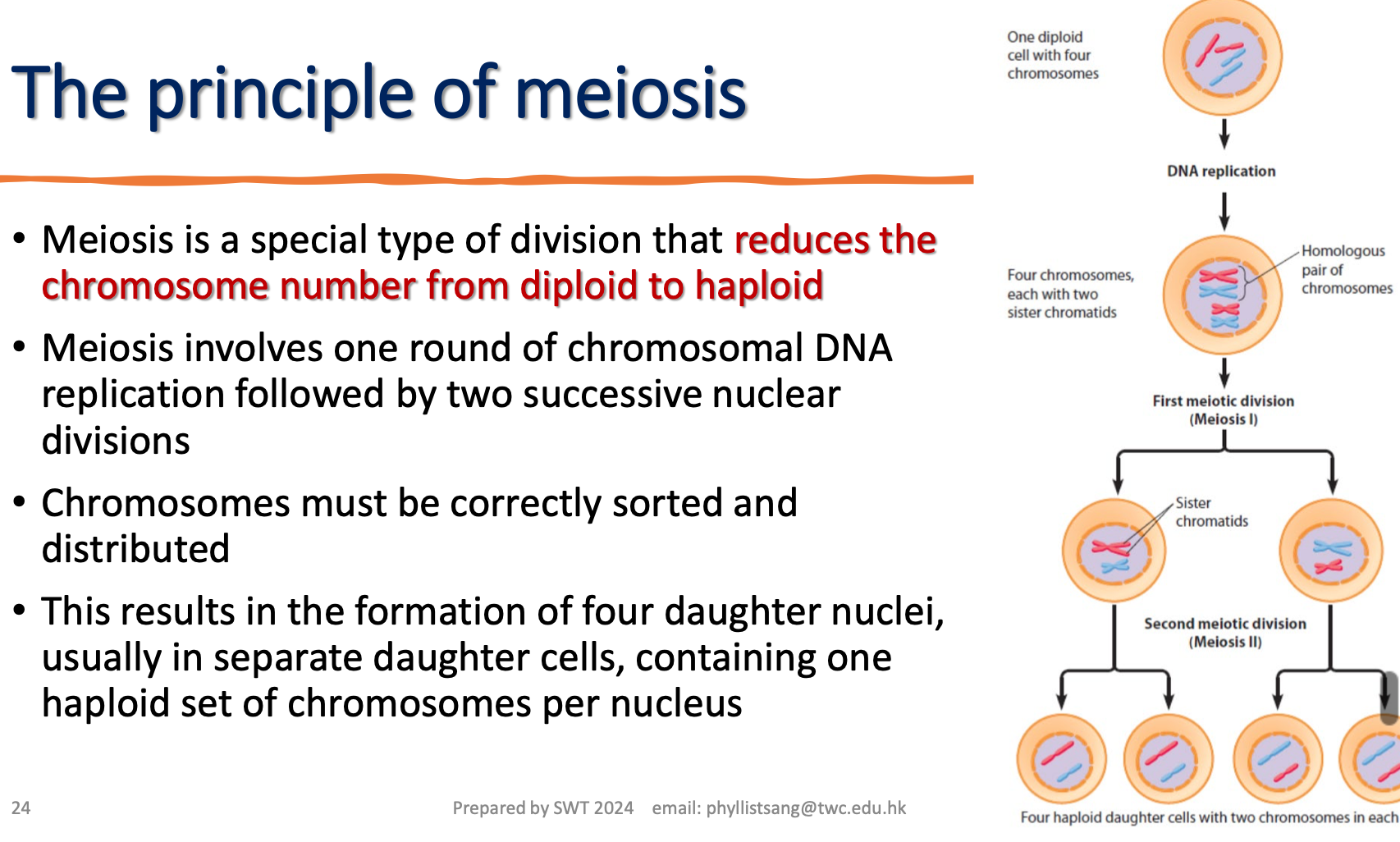
1) interphase I
centriole pairs together ( a part of centrosome ) and DNA are replicated
2)early prophase I
- the microtubules in centrosome start to formed .
- the chromosome become visible
3) mid prophase I
- pairing of homologous chromosome to form structures called bivalent, four sister chromatid are involved.
- crossing over occur → increase genetic variability
4) late prophase I
- two centrosome with MT moves to opposite end of the cell
- the nuclear envelope breakdown → allow the attachment of MT to kinetochore of chromosome → forming kinetochore microtubule
5) Metaphase I
- lining of homologous chromosome along the spindle equator .
6) Anaphase I
- the homologous pair are separated into opposite pole by the contraction of kinetochore contraction
7) telophase I and cytokinesis
- nuclear envelope formation around each haploid nuclei
- cleavage furrow grow deeper to separate two daughter cell.
describe the phase in meiosis I

there is no interphase II for meiosis
meiosis II aims to separate sister chromatid from univalent chromosome
1) Prophase II
- centrosome form spindle with microtubule
- nuclear envelope breakdown
- if chromosome condensed , it uncoil and become visible
2) metaphase II
- the haploid set of chromosome line at the equator
- the microtubule attach to the kinetochore from opposite pole
- the centrosome move to opposite pole of the
3)Anaphase II
- sister chromatid separated by the contraction of spindle fibre and move toward opposite poles of the cell
4)Telophase II
- chromosome reach the poles and begin to decondense
- nuclear envelope reform
- cytokinesis occur , the cleavage furrow deepen to cleave cell into two daughter cell.
resulting in the formation of 4 univalent (didn't pair up with homologous chromosome ) chromosome ( haploid cell )
male → 4 sperm
female → 3 polar body with one ovum
describe the follow up phase after telophase I and cytokinesis.
ignore the haploid set of bivalent ( which is typo I think )
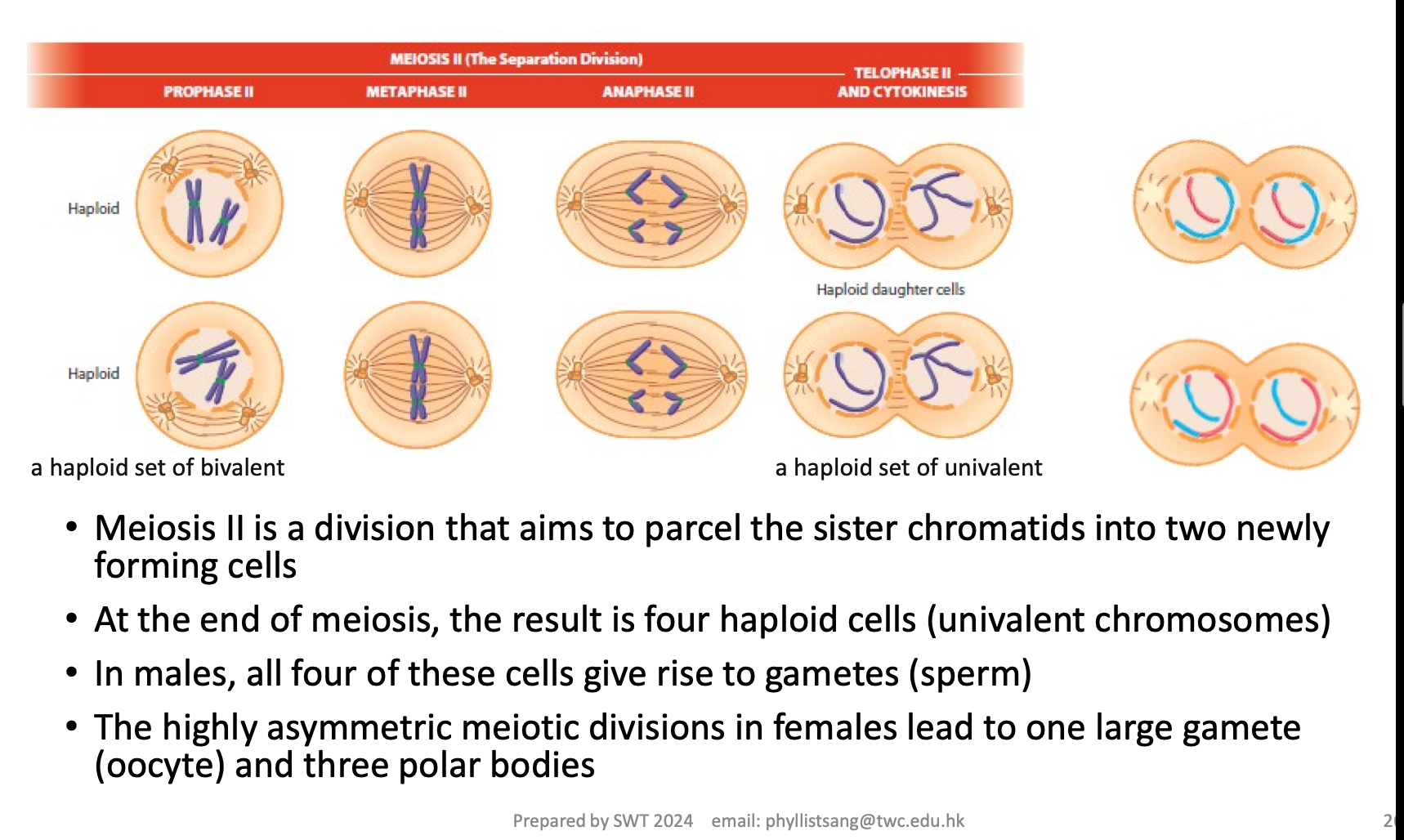
it is a structure formed by homologous pair
if chromosome that didn’t paired with its homologous chromosome are called univalent .
bivalent meaning
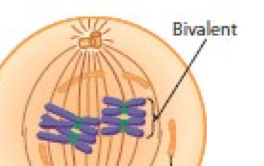
crossing over occur in the chiasma formed between non-sister chromatid , where non-sister chromatid break and rejoin , allowing for the recombination of genetic material
crossing over is important for genetic variation , leading to a new combination of alleles in offspring
describe crossing over in meiosis
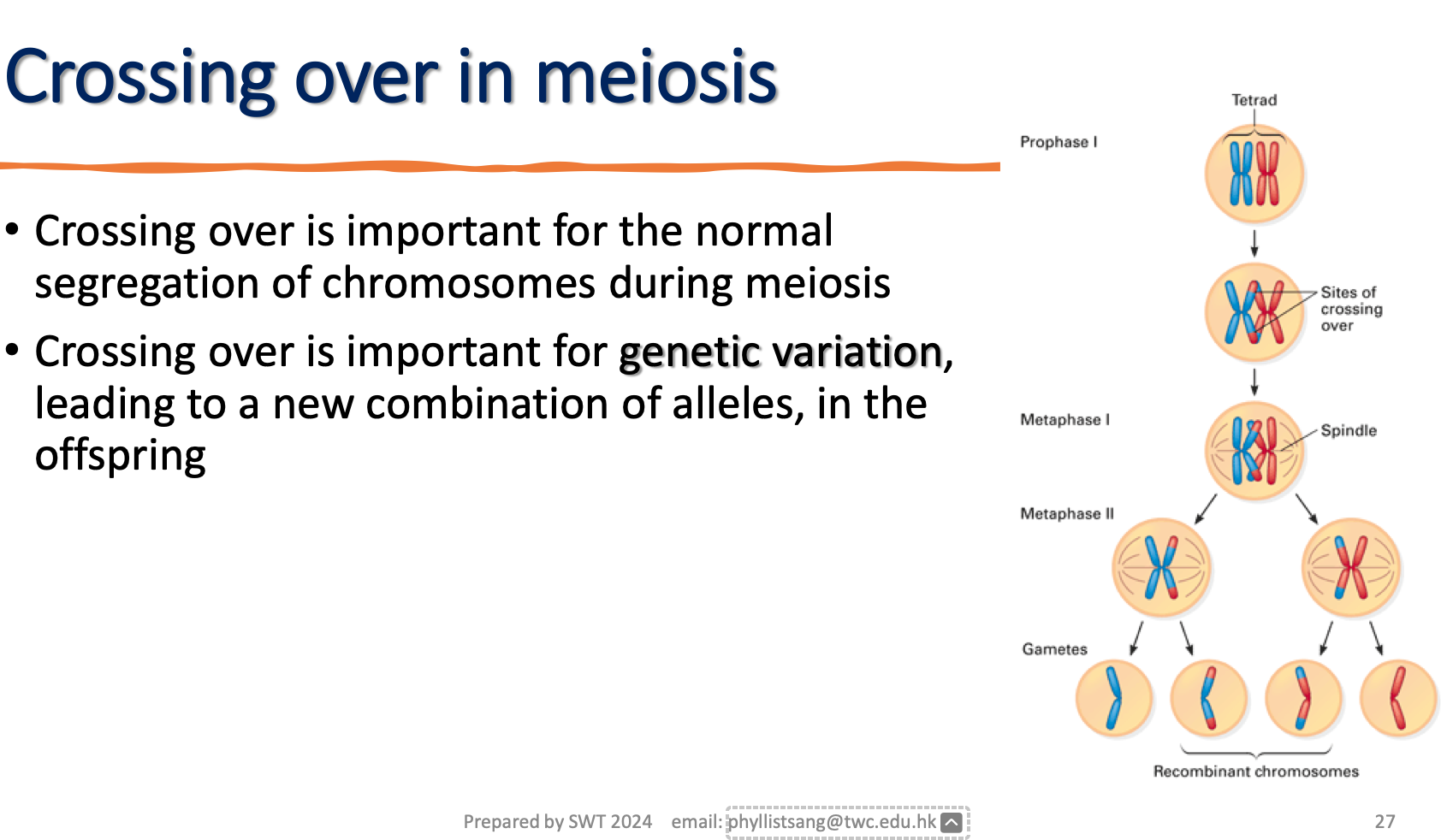
1) crossing over
2) deletion
3) inversion
4) duplication
5) translocation
types of genetic recombination in chromosome
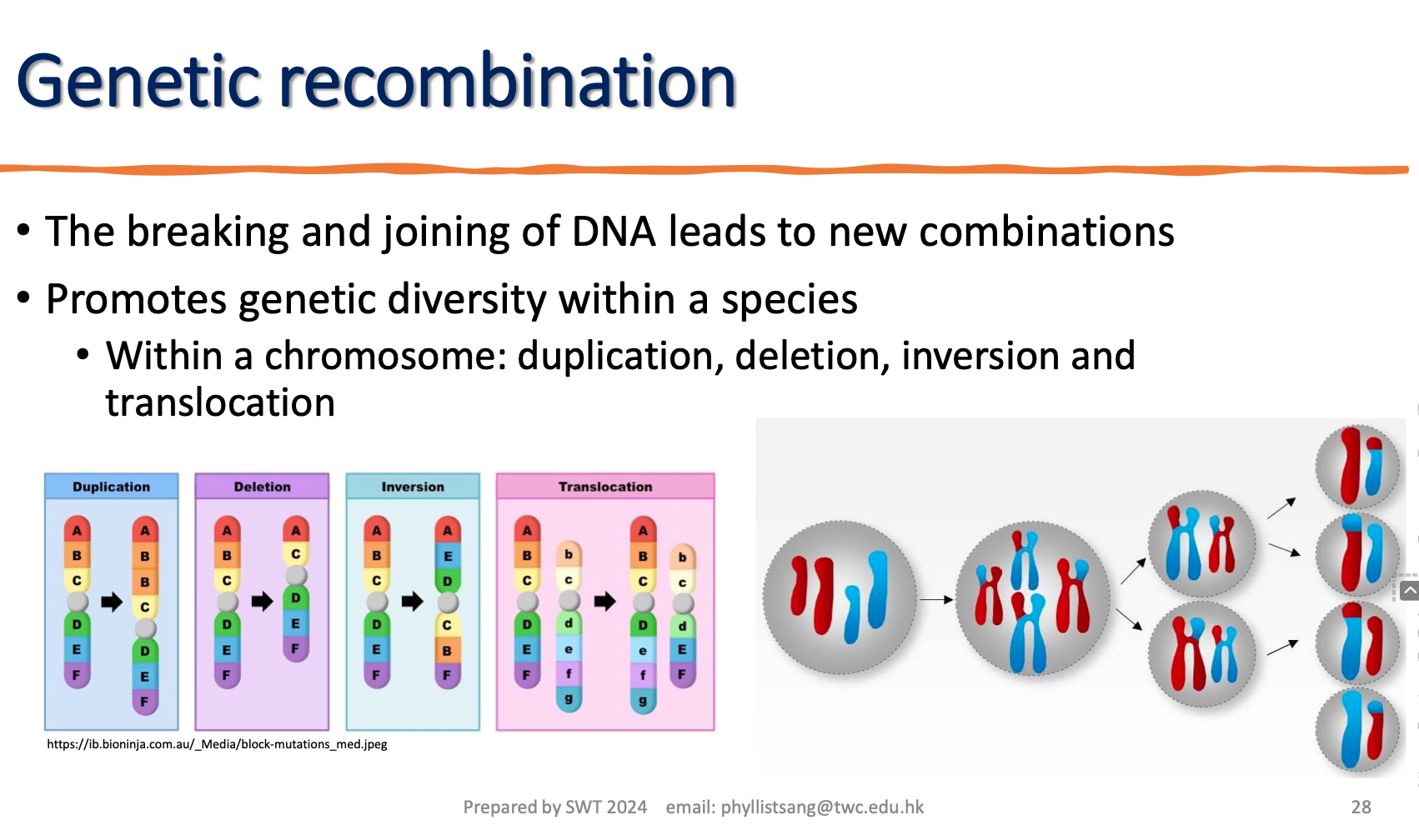
non disjunction = failure in the segregation of chromosome
can occur in either meiosis I or meiosis II
each times non-disjunction occurs → one daughter cell receive extra chromosome , one lacking one chromosome .
Once gamete with extra copies of chromosome fuse with an normal haploid gamete, a trisomy zygote will formed .
once gamete lacking one chromosome fused with an normal gamete , a monosomic zygote ( monosomy) is formed .
about meiotic non disjunction

trisomy & monosomy
Down syndrome → trisomy 21
zygote with 3 copies of chromosome are called ?
a zygote with one gamete lacking one chromosome ?
Same
- produce new cell
- start with a single parent cell
1) 4 basic stage for mitosis , 8 basic stage for meiosis
2) happens in somatic cell for mitosis , happens in germ cell ( gamete producing cell ) for meiosis
3) mitosis purpose is cell proliferation , meiosis purpose is produce gamete for sexual reproduction
4) produce 2 diploid daughter cell in mitosis, produce 4 haploid daughter cell
5) chromosome number remains the same , chromosome number is halved in each daughter cell (compare to the primary parent cell )
6) genetically identical daughter cell produce in mitosis , genetically different of daughter cell produced in meiosis .
7) crossing over involve in meiosis only
8 ) there prophase are subclassified into 3 phase in meiosis I , but only two phase in mitosis ( 諗唔到再寫)
comparison of mitosis and meiosis
